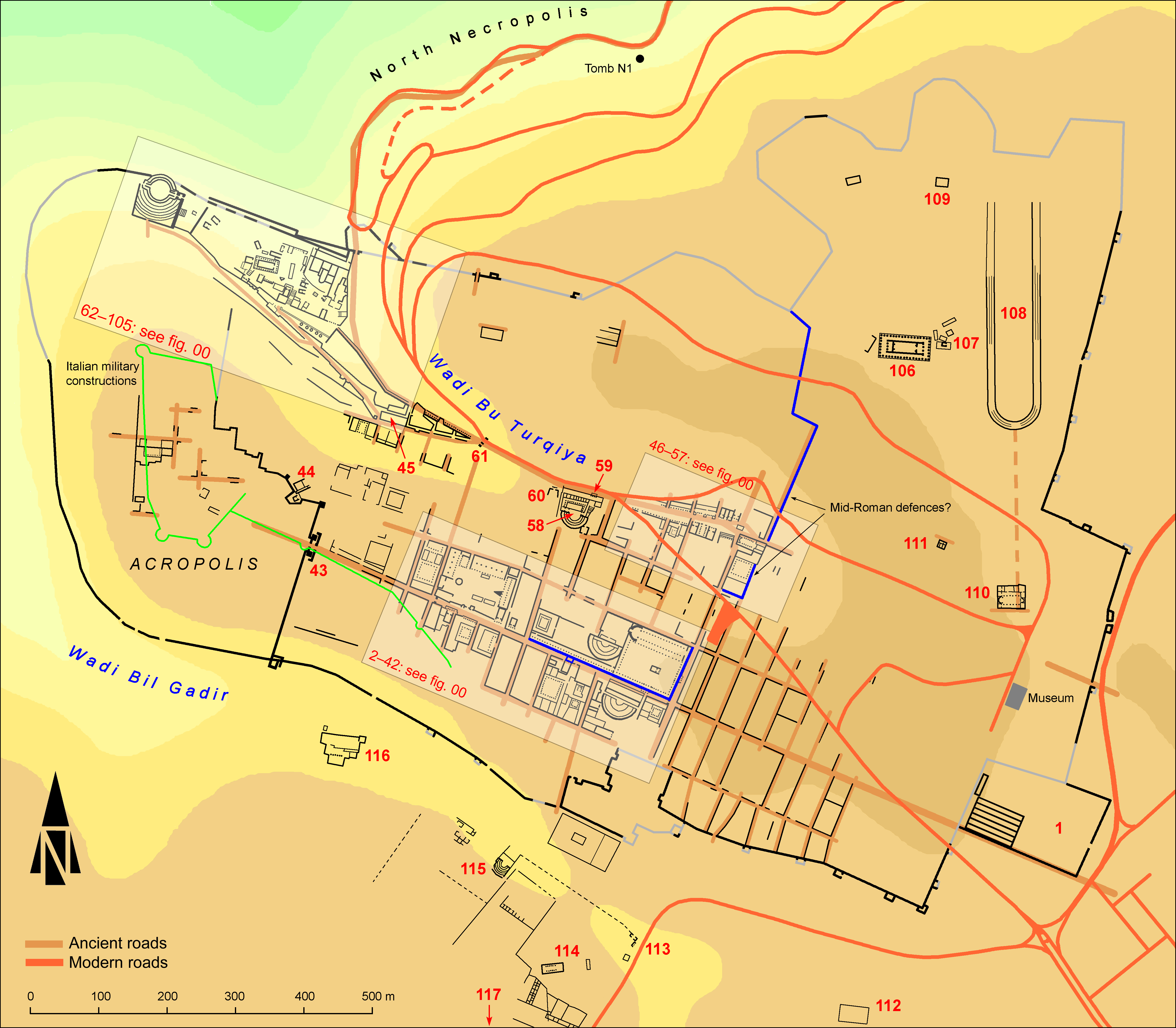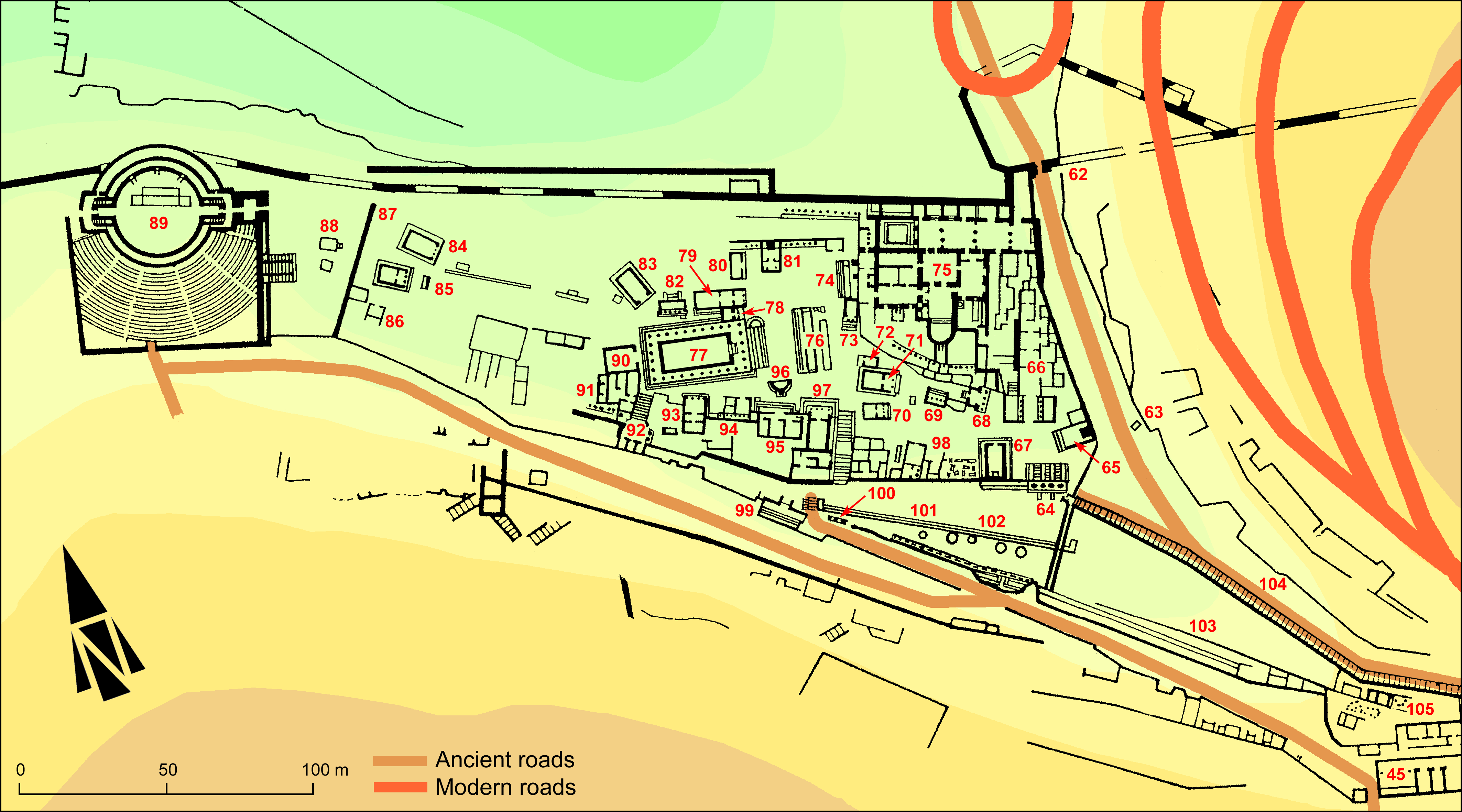EpiDoc XML:
IGCyr0967002
Trismegistos ID:
738479
Source description
Support: Fragment of a white marble stele, broken on top and below, very much chipped off at left side, complete at right edge (w: 0.49 × h: 0.55 × d: 0.18).
Layout: Inscribed on front face (preserved width 0.49).
Letters: Hand 1: 0.025; calice-shaped upsilon. Hand 2:0.025; phi with flattened loop. Hand 3:0.02; smaller omicron, slanting sigma, horseshoe omega. Hand 4:0.015; lower delta, non-slanting sigma, widely open upsilon. Hand 5: 0.018; with slight serifs; smaller theta and omicron, slightly slanting sigma. Hand 6: 0.025; small serifs; slanting sigma. Hand 7: 0.025; only beta and rho are so tall; smaller delta and omega, the latter hanging from the upper line. Hand 8: 0.025; large circular letters, dotted theta. Hand 9: 0.022; smaller omicron, broad eta, slanting sigma. Hand 10: 0.023; smaller omicron, slanting sigma, calice-shaped upsilon. Hand 11: 0.02; non-slanting sigma, large omega. Hand 12: 0.018; short oblique strokes of kappa, smaller omicron, slightly slanting sigma. Hand 13: 0.018; beta with two large loops, very small omicron, calice-shaped upsilon.
Date: Between 260 and 245 BC (Rosamilia) (prosopography).
Findspot: Found before 1935 by G. Oliverio at Cyrene ➚: Sanctuary of Apollo, in the Trajanic Baths.
Place of origin: Findspot.
Last recorded location: Seen by Pugliese Carratelli in 1960 in Shahat: Cyrene Museum. Seen by Dobias-Lalou in 2010 at the same place.
Text constituted from: Transcription from stone (CDL).
Bibliography
SECir, 71 (fig. 62); IGCyr 096700 ➚; Rosamilia 2018, especially pp. 273-282; 294-296, whence SEG 68.1747 and 68.1750; Rosamilia 2023, pp. 95-98 (historical commentary), pp. 252-253, number 9 (text). Cf. Masson 1976, p. 56; Laronde 1987, p. 190; Dobias-Lalou 2010, p. 97, whence SEG, 60.1828; Dobias-Lalou 2016, pp. 250-251, whence SEG, 66.2318.
Text
Apparatus
2: [c. 4]σ̣ταφαν SECir, Rosamilia 2018: [c. 6]ταφαν IGCyr; [Αρ?]ταφαν Masson 1976 || Ἰτάγ̣[ω] Dobias-Lalou 2010: Ἰταί̣[ω?] SECir
5: [Θε]ύ̣δωρος SECir, Fraser – Matthews 1987, IGCyr: [Πολ]ύ̣δωρος Rosamilia 2018
6: [Ν]α̣ύτας SECir, Rosamilia 2018: [Φι]λ̣ύτας IGCyr
10: [Γλαύ]κ̣ων Rosamilia 2018: [c. 5]κ̣ων SECir, IGCyr
11: [Ἐτεωνε?]ὺς Rosamilia 2018: [c. 7]υς SECir, IGCyr
13: [---]τ̣οβούλου SECir, Rosamilia 2018: [Ἀρισ]τ̣οβούλου Fraser – Matthews 1987 (Reynolds' reading).
French translation
[---]s fils d'Euklès, [---]staphan fils d'Itagos, [El]aiitas fils de Theudôros, [The]udôros fils de Polianthès, [N]autas fils d'Eumèlidas, Iasôn fils de Biandros, [Po]seidis fils de Theudôros, [Eu]tychos fils d'Hèrakleitos, [Glau]kôn fils d'Etéoklès, [Etéone?]us fils d'Etéoneus, (scil. Un tel) fils de Nikanôr, [Un tel](scil. fils d') [---]toboulos, [---].
English translation
[---]s son of Eukles, [---]staphan son of Itagos, [El]aiitas son of Theudoros, [The]udoros son of Polianthes, [N]autas son of Eumelidas, Iason son of Biandros, [Po]seidis son of Theudoros, [Eu]tychos son of Herakleitos, [Glau]kon son of Eteokles, [Eteone?]us son of Eteoneus, (scil. So-and-so) son of Nikanor, [So-and-so](scil. son of) [---]toboulos, [---].
Italian translation
[---]s figlio di Eukles, [---]staphan figlio di Itagos, [El]aiitas figlio di Theudoros, [The]udoros figlio di Polianthes, [N]autas figlio di Eumelidas, Iason figlio di Biandros, [Po]seidis figlio di Theudoros, [Eu]tychos figlio di Herakleitos, [Glau]kon figlio di Eteokles, [Eteone?]us figlio di Eteoneus, (scil. il tale) figlio di Nikanor, [il tale](scil. figlio di) [---]toboulos, [---].
Commentary
The names on this inscription, written in different hands and found in the sanctuary of Apollo, should list eponymous priests of Apollo, as already suggested by Dobias-Lalou 2010. This idea has proved more probable after the new study by Rosamilia 2018. First he argued that the three names in koine beginning at line 9 are the linguistic reflect of a period when non-Cyrenaeans were eponymous priests of Apollo, in the first years of the Ptolemaic re-annexation of Cyrenaica. He was then able to restore the names of the two priests mentioned at lines 10 and 11: one was Glaukon son of Eteokles, an Athenian-born, brother of the well-known Chremonides, who fled to Alexandria after 262 and served Ptolemy III; the other one would be Eteoneus son of Eteoneus, from a family affluent at the same court and also related through marriage with Pelops son of Pelops (see IGCyr0633002). Both would have been priests of Apollo at Cyrene, as well as the two mentioned at lines 12 and 13, who are not identifiable.
Moreover, Rosamilia suggested to identify three of the preceding priests, who were members of prominent Cyrenaean families: Iason son of Biandros (line 7) might be akin to the son of Biandros in the list of subscribers (IGCyr0093002 a.6); Elaiitas son of Theudoros (line 4) might be the grandson of the homonymous priest who dedicated the so-called 'bench of Elaiitas' (IGCyr0805002) and possibly a brother of the dedicator of IGCyr1020002. As to the one mentioned at line 5, read by him as Polydoros son of Polianthes, possibly the priest whose name is also incomplete in the account of damiergoi IGCyr0138002, Dobias-Lalou does not agree. In her opinion, the gap, as compared with the very similar beginning of the father's name, would be too short for three letters. She sticks thus to the former reading Theudoros. Conversely, she agrees now with Pugliese Carratelli and Rosamilia about line 6, where Nautas, although unique in Cyrenaica, fills the gap better than Philytas.
Although Laronde 1987, p. 190, discussing Stucchi 1975, p. 113, n. 6, dated the lettering to the second or first century BC, we already felt at IGCyr that the lettering seems to be somewhat earlier. Rosamilia's study leads to a date of the re-annexation of Cyrenaica about 250 and the first names in the list (all priests are not necessarily mentioned) might be up to 10 years earlier.
CC BY-NC-SA 4.0 Deed Attribution-NonCommercial-ShareAlike 4.0 International License.
All citation, reuse or distribution of this work must contain a link back to DOI: https://doi.org/10.60760/unibo/igcyrgvcyr2 and the filename (IGCyr000000 or GVCyr000), as well as the year of consultation.


